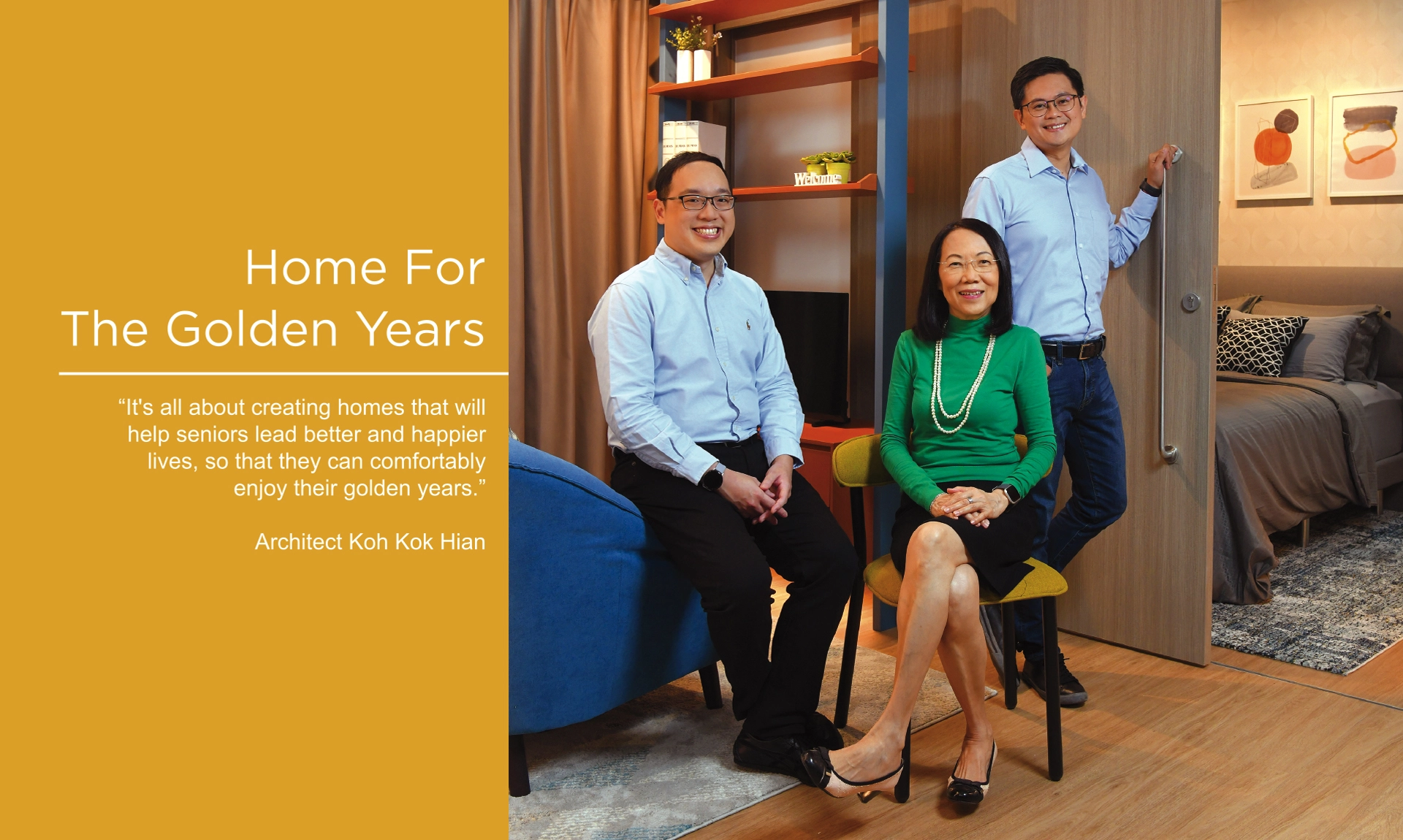When Koh Kok Hian was asked to design HDB’s first assisted living flats for seniors, he knew it would be more than just designing the four walls of a flat. Kok Hian and his team would be creating homes where seniors, supported by care services administered by the Ministry of Health, can age independently and gracefully. This is the vision for Harmony Village @ Bukit Batok, the first Community Care Apartments in Singapore.
Meaningful Design
Creating homes for seniors, Kok Hian shares, requires thoughtful design consideration. He and his fellow architects Wong Ju Cheng and Lee-Loy Kwee Wah had to consider how seniors with different needs and abilities would be able to live and move around their homes with ease.
To better understand the needs of seniors, the team – together with the Ministry of National Development and Ministry of Health – conducted focus group discussions with stakeholders such as caregivers, healthcare providers, and the seniors themselves. “We created mock-ups of the Community Care Apartments at HDB’s Centre of Building Research, and invited them to see the space and provide their feedback,” Kwee Wah says.
The preview was well-received. Many felt this new housing typology is timely; seniors get to live independently and still access support, such as care services, when they need it. With the feedback, the team made further refinements to the space, such as increasing the size of the flat so that it is more comfortable and liveable, and introducing a sliding partition between the bedroom and the living/ kitchen area for greater privacy.
“Even though we have good design intentions that are supported by research, the real test is when the user comes in and actually uses the space. The positive response gave us assurance that we were on the right track in understanding the seniors’ immediate living and caregiving needs,” Ju Cheng recalls. “It also helps us work towards making better assisted living flats in the future.”
At Home in the Community
A key benefit of living in Community Care Apartments is that it provides for residents’ overall well-being. “It’s more than just providing homes that contributes to their physical health. Our design must support their social and mental needs as well,” Kwee Wah explains. “Seniors are especially vulnerable to social isolation and loneliness. So how can we have a space that encourages them to come out of their flats and interact with their neighbours?”
To this end, the team designed large communal areas which are visually linked to the flats, intending them to be extensions of residents’ own living rooms: “When they see their friends in the communal areas right outside their homes, we hope they will be motivated to join them, be it for a chat or to share meals. Such social connections are key to keeping their bodies and minds active, and could potentially delay the onset of common health conditions associated with ageing such as dementia.” The communal spaces will also be used to curate community programmes, such as exercises, for residents to enjoy.
“It’s all about creating homes that will help seniors lead better and happier lives, so that they can comfortably enjoy their golden years,” Kok Hian smiles. “I consider this one of the most meaningful projects of my career.”
